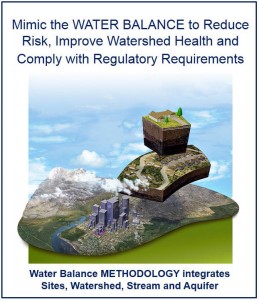Green Infrastructure by Another Name: Chinese ‘Sponge Cities’ Will Capture Rainwater to Restore Urban Water Balance
Note to Reader:
Existing grey infrastructure in China cannot cope with rapid urban expansion and frequent droughts and floods. Several cities, with Beijing’s approval, are experimenting with rainwater capture methods as an alternative.
China bets on ‘sponge cities’ to cope with flooding and drought
Chinese cities are suffering from floods more often than most. At the same time, many cities in China face a serious water shortage. The need to confront both water shortages and urban flooding has reportedly created a major infrastructure challenge for Chinese city planners.
The Chinese acknowledge that climate change has played a role in the increase of urban flooding, producing more rainfall during shorter periods. Widespread adoption of rainwater capture techniques is seen as a way to alleviate drought as well as flooding.
Restore the Water Balance
Enter the so-called ‘sponge city.’ This is a way to visualize the Water Balance, and use of landscape-based measures to restore the seasonal distribution of water entering and exiting a region each year.
President Xi Jinping has been quick to back the idea. Earlier in 2015, the Chinese central government pledged to provide billions in financial assistance over the next three years to implement green infrastructure (permeable pavement and rain gardens) so that the urban landscape in 16 cities will function as urban sponges. This is much like the approach adopted by the City of Philadelphia and others in North America.
pavement and rain gardens) so that the urban landscape in 16 cities will function as urban sponges. This is much like the approach adopted by the City of Philadelphia and others in North America.
While the buildup of ‘sponge cities’ does not mean the end of constructing gray infrastructure (storm sewers and other traditional methods of dealing with rainwater), Chinese experts say that it would reduce demand on costly drainage systems.
Water Balance Methodology
Developed in British Columbia, the Water Balance Methodology is about managing the whole rainfall spectrum and providing benefits to the stream through the wide range of  stream needs – from base flow to managing flooding. The Water Balance Methodology bridges all ranges in rainfall and streamflow events.
stream needs – from base flow to managing flooding. The Water Balance Methodology bridges all ranges in rainfall and streamflow events.
The Water Balance Methodology incorporates robust and proven calculation techniques and engineering applications to define a watershed and stream as a whole system. In this manner the results can be used to provide a quantitative assessment of both impacts and mitigation effectiveness. It also possible to show benefits that have been long thought as not achievable.
To Learn More:
To read the complete story published by US-based Environment & Energy, click on EXTREME WEATHER: China bets on ‘sponge cities’ to cope with flooding and drought
For an introduction to the Philadelphia experience, click on Green City, Clean Waters – Philadelphia’s bold plan for rainwater management re-imagines the urban landscape.
To learn more about the British Columbia approach, click on click on Primer on Water Balance Methodology for Protecting Watershed Health.


